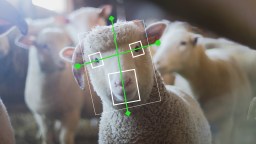SEBASTIAN JUNGER: The internet is sort of this crazy amazing and sometimes sort of bullying environment. In a way it's an exciting and a dangerous place. Because of the internet we can all of us now with a few clicks can watch video of incredible atrocities being committed against other people. That's new in human experience. I mean usually if you're watching someone's head get cut off you're in a situation where you're either part of that and you have some moral responsibility or your own head is about to get cut off. But either way your body goes into a sort of fight or flight reaction which is programmed by hundreds of thousands of years of evolution. When you see violence your body is ready, readies itself to deal with violence.
So now what we can do is watch violence from the safety of our couch. Our body doesn't know we're sitting on our couch. The moral debate in our minds isn't engaged the way it is when someone's head is actually getting cut off in front of you. That has real consequence psychologically for people and personally I just don't watch anything online that I wouldn't be okay with seeing in person. Seeing violence up close and personally I know the effect that it's had on my psyche, on me as a person and I don't want it. I just don't watch it. And I do worry about young people who have access to this. It has to be harming them and we haven't had the internet long enough to see how that harm will play out through the course of someone's life.





